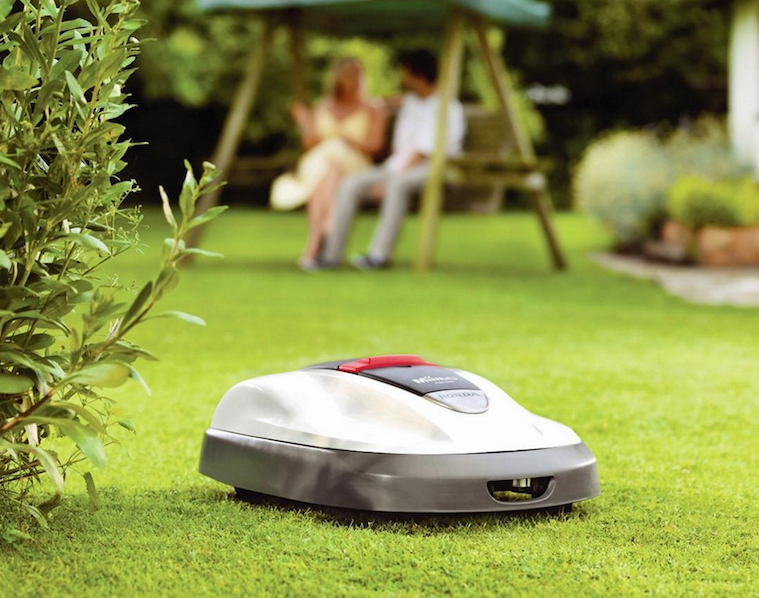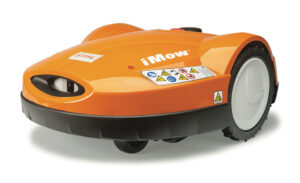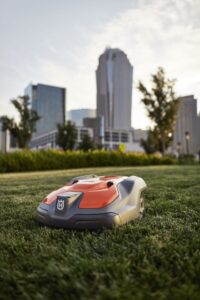The Rise of Robotic Mowers

By John Kmitta
The following is excerpted from an article published in Outdoor Power Equipment magazine, sister publication to the Landscape Business brand.
With the growing popularity of “connected” or “smart” homes, homeowners are looking at the benefits of autonomous/robotic mowing. However, it is not just homeowners identifying the potential for robotic mowers. Faced with increasing labor shortages, landscape industry professionals are now examining how robotic mower might fit within their menu of services.
“Automation is not new. But automation in mowing is becoming the newest disruptor in the green industry,” said Elisha Lipscomb, senior marketing strategist, lawn and garden, at Honda (manufacturer of Miimo robotic mowers). Lipscomb added that while Miimo is primarily for residential use, Honda is seeing more homeowners and landscapers adopting robotic mowing.
“This can be the next life-changing technology. You are no longer tied to your house on the weekend. It makes your life easier,” she said. “Businesses can reallocate resources – especially with the labor issues going on right now in the landscape industry. The need to have multiple crews is reduced. Crews are working smarter, not harder”
Lipscomb added that robotic mowers free up more time, are constantly maintaining the lawn, and fertilize the lawn because the grass is cut in tiny snippets during each pass – resulting in a healthier lawn.
“Miimo and other robotic mowers run on battery – no oil or gas, and are pretty much maintenance free,” Lipscomb added. (Maintenance includes general cleaning, replacing blades, and occasionally inspecting the boundary wire.) “Everything is included in the box. You purchase the unit, get the boundary wire, installation, and it is pain free.”

Connected homes are priming the pump to get consumers to adopt this technology, said Brian Manke, new technology product manager, Stihl Inc., which manufactures iMow robotic mowers. On the landscaper side, it is push from the lack of labor, Manke added.
According to Steven Uljua, product manager for robotics at Husqvarna (manufacturer of the Automower line of robotic mowers), at GIE+EXPO three years ago, robotic mower manufacturers who suggested robotics as part of the landscape business model were laughed at by landscape professionals. Two years ago at the show, landscapers blamed robotic mowers for taking business away from the landscape contractor. However, Uljua said that he spent most of his time at the 2018 GIE+EXPO speaking with landscapers who are looking into robotics because of the labor shortage. Uljua said he asks landscapers if they could hire a worker who is on time every day, does not require benefits, but they only cut grass, would they hire that worker? Most would say, “yes,” he said.

Uljua added that many landscapers are struggling with the dilemma of either doing marginal work on all their clients’ properties (because of the labor shortage) or letting some clients go/turning down new clients in order to maintain the quality of work.
Robotic mowers free crews up to work on tasks such as blowing, string trimming, edging, hedge trimming, fertilization, and other jobs that are not likely to be replaced by robots or drones, he said.
“This is a device to help your business,” said Uljua. “When you put this in your business, you are keeping your employees busy and elevating them to a new level.”
Manke said that a landscape business model involving robotic mowers would be similar to the existing business model. “People will find different ways of selling it, and having the customer pay for it,” he said. “Whether the customer owns [the robotic mower] or if the landscaper owns it, the customer cares that their property looks maintained.”
John Kmitta is associate publisher/editor of Outdoor Power Equipment and Landscape Business. For the full article, please visit https://outdoorpowerequipment.com/2019/03/06/the-rise-of-robotic-mowers/12914/
Top photo of Honda Miimo provided by Honda.


